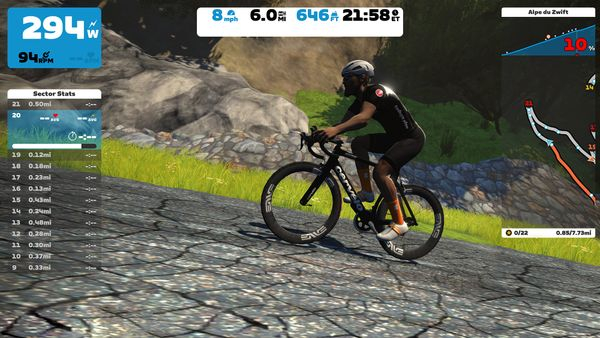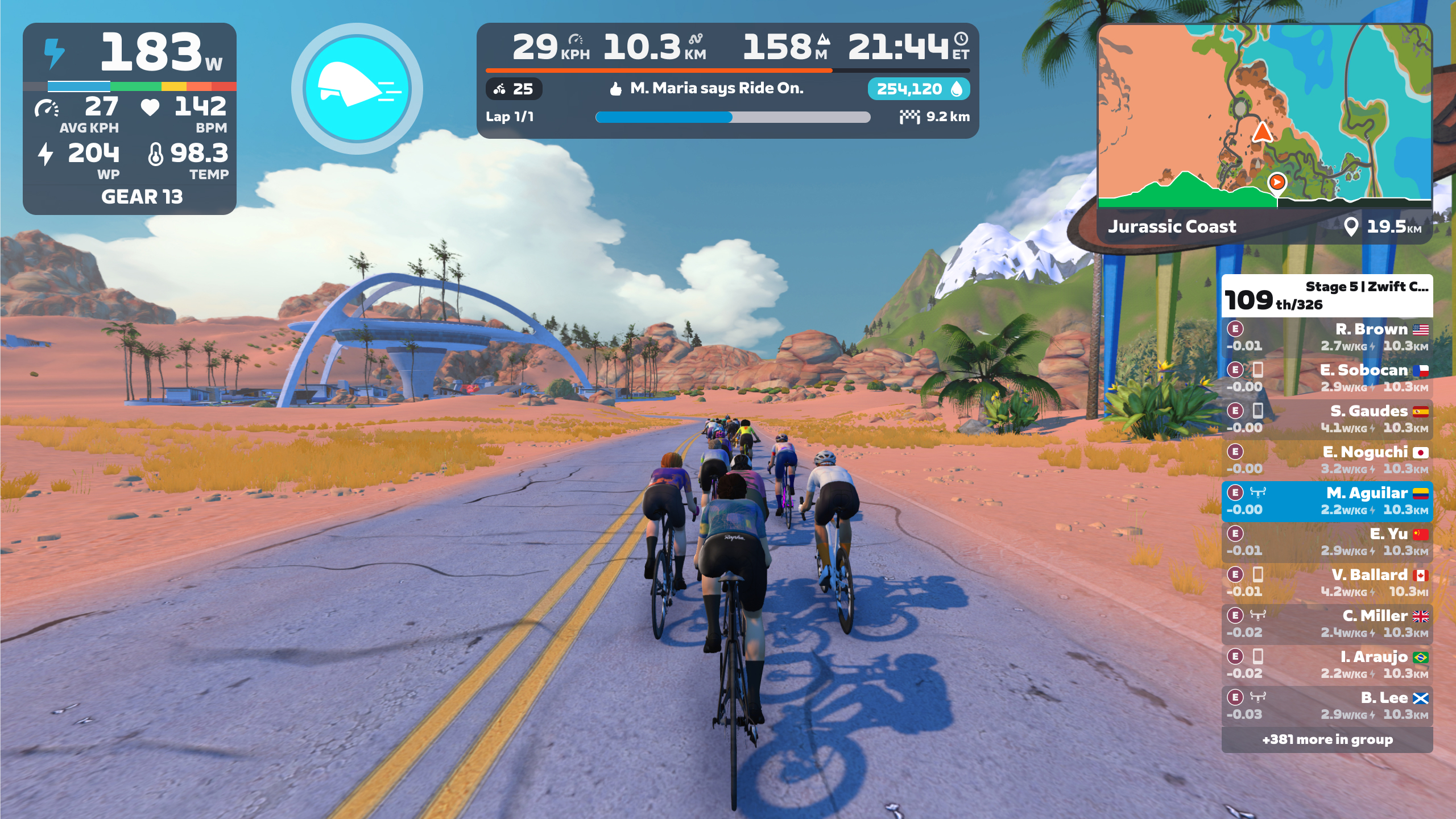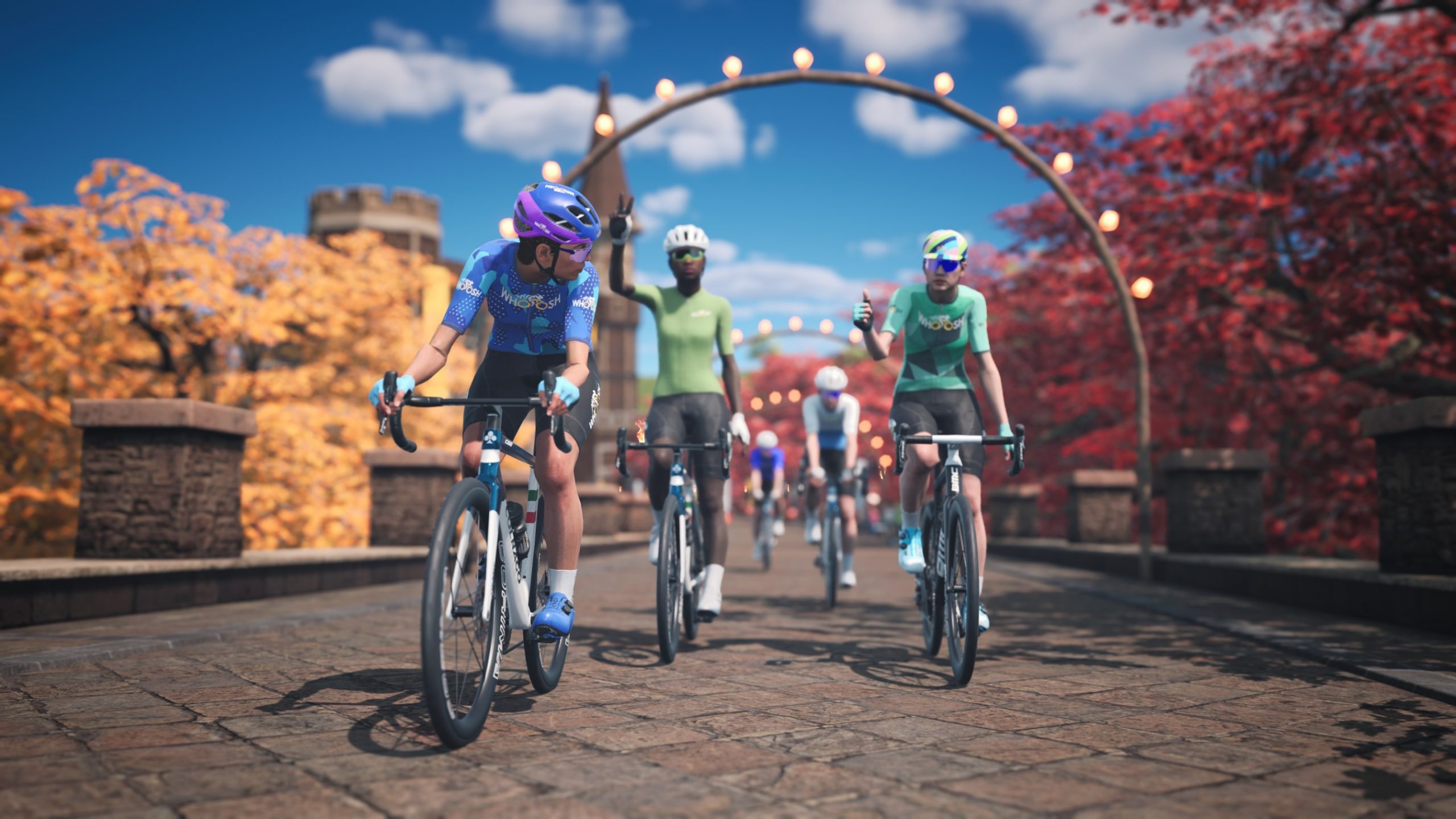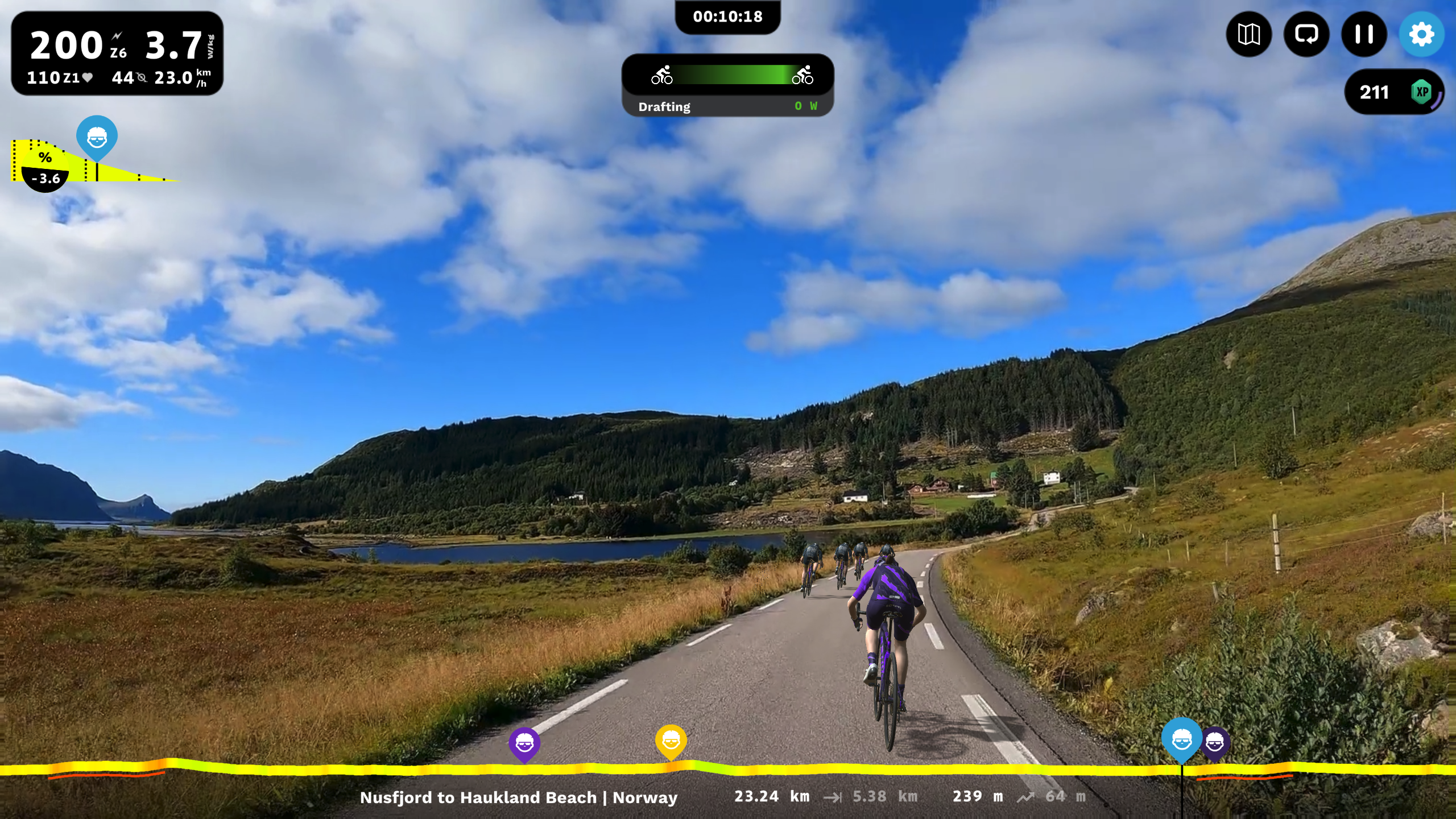Zwift vs MyWhoosh vs Rouvy – which is the indoor training app for you?
Here's how to choose the best indoor training app for you this winter


Since the Covid pandemic, it seems that the indoor training market has had an absolute boom. Riders, more than ever, are trading riding outside in the foul and wet weather for riding in the comfort of their homes.
Previously, this meant staring at a blank wall more often than not, with only headphones or perhaps a DVD, and heavy breathing for company.
Now, though, there are a host of indoor training apps that have been designed to make indoor training far more interactive and enjoyable. Less of a ‘pain cave’ and more of a ‘training paradise’.
However, it can be difficult to work out which indoor training app might be the right one for you. Some people enjoy the gamification that comes from the likes of Zwift and MyWhoosh, while others want a more realistic riding experience, more akin to virtual reality, with apps such as Rouvy.
To make matters a little easier, I’m going to summarise the key features of each of these apps, the potential pros and cons for different riders, and, of course, pricing details.
For ease of explanation, all of these apps connect to smart trainers, which can then control the trainer resistance based on how hard you pedal and the terrain of the virtual world you’re riding in.
They also all work with virtual shifting options and can pull workouts from apps like TrainingPeaks while uploading completed sessions to the likes of Strava.
The latest race content, interviews, features, reviews and expert buying guides, direct to your inbox!

Zwift
Founded back in 2014, Zwift has come on leaps and bounds over the years to become a real powerhouse in the indoor cycling app world. Sponsoring the likes of the Tour de France Femmes and Paris-Roubaix Femmes, along with Mathieu van der Poel and his Alpecin–Deceuninck team.
The app itself has taken on the mantra ‘Fun is Fast’ since 2021, acknowledging the app’s gamification elements alongside a more dedicated training and racing focus.
Zwift features a host of virtual cycling worlds, some fictional, such as the largest Watopia map, while others are based on real locations, such as the Champs-Élysées.
All these maps feature set routes alongside the ability to ride your own based on taking different turns. Virtual mountains and climbs are also available to test your mettle on simulated real-world challenges.
To add an element of gamification to the system, you can level up by riding your bike while building up virtual ‘Drops’ currency as you exert yourself. Levelling up unlocks new outfits, while Drops can be used to purchase new bikes, wheels, and upgrades for those.
For those with a completionist mentality, it’s a great way to motivate you to train and ride. Route badges can also be collected with more routes added routinely to the app. Visuals are also animated, giving a more gamified sensation rather than seeking virtual reality-style graphics.

It’s not all about games, though, as there are a host of training plans and sessions to choose from. These have not had the most updates of late, admittedly; instead, new workout events are added, such as Base Camp or the now-postponed to 2026 Zwift Academy. These offered set workouts to complete at various seasons, with virtual and sometimes real-world rewards available.
Until 2024, Zwift also hosted the Indoor Cycling World Championships, as well as a professional racing league. That, however, is set to be disbanded in favour of focusing more on community events and workouts. Zwift has long been used as a place to ride and socialise with groups of riders virtually, with the ability to set meet-ups and direct messaging.
If you want an app that focuses primarily on fun and social aspects without forgoing a dedicated training element, then Zwift is likely the option for you. However, as the years have gone on, the price has increased to £17.99/month or £179.99/year.
MyWhoosh
That brings us on to our next platform, a relative newcomer and something of a disruptor to the market, UAE-owned platform MyWhoosh.
Since 2024, MyWhoosh has become the new host of the UCI E-Sports Cycling World Championships, with a similar offering to Zwift, but with a few key differences and distinctions.
First and foremost, MyWhoosh is completely free to use, making it a very attractive option for those who are doing indoor training on a budget. The graphics are not quite as fluid and smooth as Zwift, with a somewhat halfway house between video game graphics and more virtual reality. I personally find Zwift more visually pleasing, but I also generally just watch a film or series when riding, so I don’t pay that much attention to that.
MyWhoosh has also set itself apart when it comes to workouts and races. In terms of racing, MyWhoosh allows professional indoor racers to exist and earn a legitimate salary. The virtual race series on offer have large sums of prize money available, although competitors must go through rigorous procedures to ensure that equipment is calibrated and accurate, while body measurements also require verification. This is done frequently through the season to try and ensure there are no artificial boosts in performance, similar to the UCI biological passport, but more of a virtual physiology passport.

Another key selling point of MyWhoosh is the expansive workout platform. It features a huge array of workouts, training plans, as well as features such as Live Coach with group sessions completed live with other riders and special guests such as Peter Sagan. You can also create your own workouts to quite an advanced degree, which is more akin to TrainingPeaks’ workout builder. I’ve been thoroughly impressed by it.
There are also similar features to Zwift, such as pacing bots, group rides, the ability to chat in-ride, and also unlock new bikes, wheels, kit, allowing a lot of personal customisation.
MyWhoosh uses a host of different maps, again, some are fictional locations, while others are based on real-world courses. However, unlike Zwift, these courses are on a rotation and not accessible at all times. There is also a smaller overall user base, but this is ever-increasing. If you value a broad spectrum of workout options and training plans, and love the idea of it being free, then MyWhoosh is an excellent platform to use.
Rouvy
Rouvy takes a different path from the other options, in that the focus point here is virtual reality and real-world simulation with routes.
You can ride the Lighthouse route in Mallorca, the Stelvio Pass in northern Italy, and thousands of other routes. To provide some realism, Rouvy overlays your virtual rider into real-life videos of the routes. There are also robot ghost riders for the company. In addition to the routes available, you can also upload your own routes and route videos if there is a specific route you’d like to ride and share with other users.
It’s not just about the virtual reality aspect, though. Rouvy sponsors World Tour teams Visma Lease a Bike and Lidl Trek, and features workouts claimed to be used by the teams. This means a total of more than 600 workouts that riders are able to complete.

Rouvy also makes sure to keep a social element to your virtual cycling. You can meet other riders along the routes, connect with them by adding them as friends, and then give kudos and such to other riders. This is also paired with competitive events such as bunch races and time trials, and although there are no cash prizes like MyWhoosh, you can be entered into prize draws. You can also customise your bike and avatar, although not to the same depth as the other apps mentioned here.
Pricing of the app is similar to Zwift, starting at £17.99/month, or £159.96/year. However, there are discounts available to Duo accounts, where perhaps two users in the same household have an account each, or group accounts for clubs and teams, where five users can split the £53.99/month or £450/year.
If you want a platform that offers a more real-world-like riding experience, then Rouvy is definitely the platform to go for. It forgoes the more gamified elements of MyWhoosh and Zwift in favour of trying to recreate riding out on the open roads as best as possible. If this sounds like your kind of thing, Rouvy may be the way to go.

Freelance cycling journalist Andy Turner is a fully qualified sports scientist, cycling coach at ATP Performance, and aerodynamics consultant at Venturi Dynamics. He also spent 3 years racing as a UCI Continental professional and held a British Cycling Elite Race Licence for 7 years. He now enjoys writing fitness and tech related articles, and putting cycling products through their paces for reviews. Predominantly road focussed, he is slowly venturing into the world of gravel too, as many ‘retired’ UCI riders do.
When it comes to cycling equipment, he looks for functionality, a little bit of bling, and ideally aero gains. Style and tradition are secondary, performance is key.
He has raced the Tour of Britain and Volta a Portugal, but nowadays spends his time on the other side of races in the convoy as a DS, coaching riders to race wins themselves, and limiting his riding to Strava hunting, big adventures, and café rides.
You must confirm your public display name before commenting
Please logout and then login again, you will then be prompted to enter your display name.
